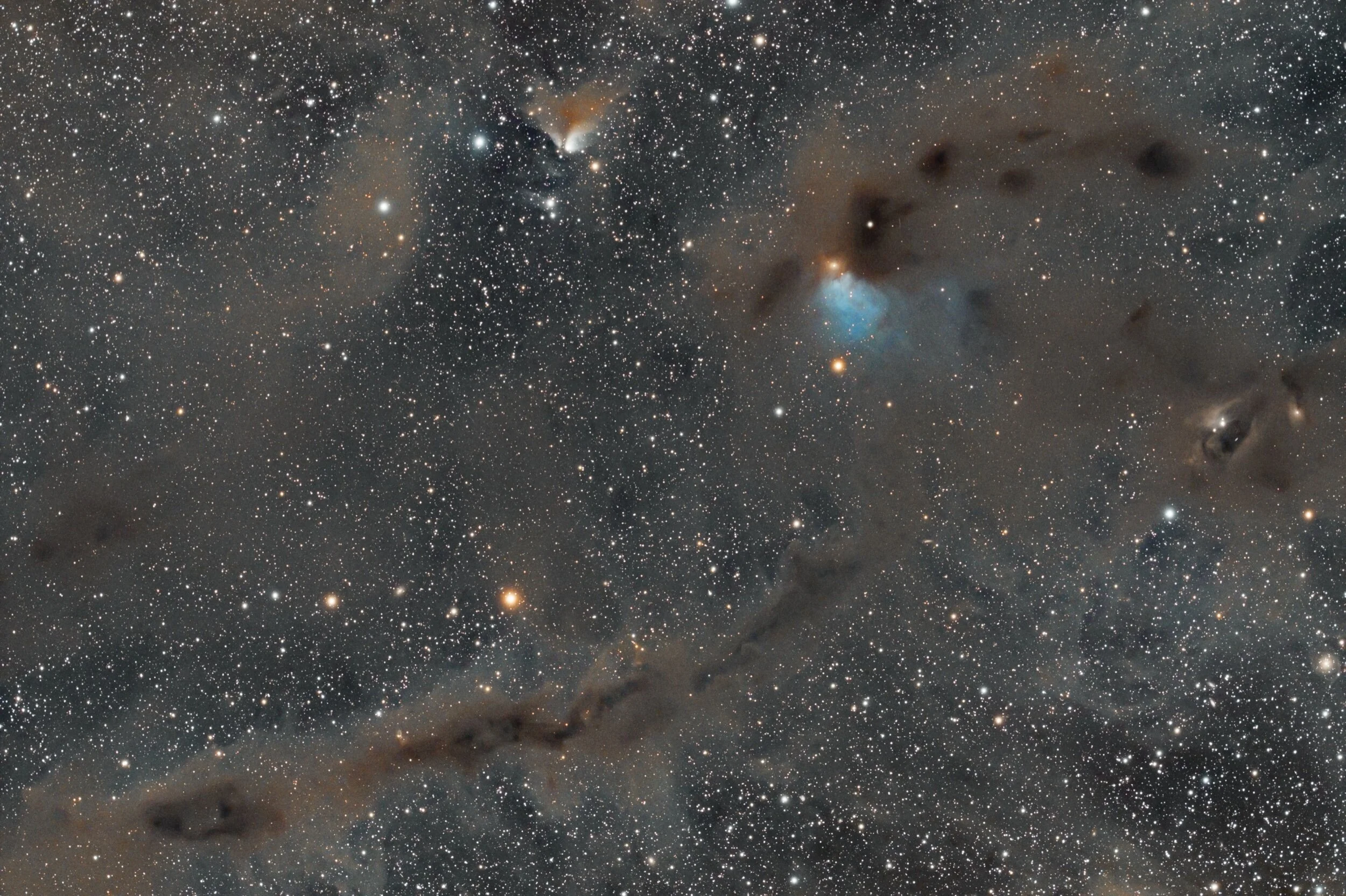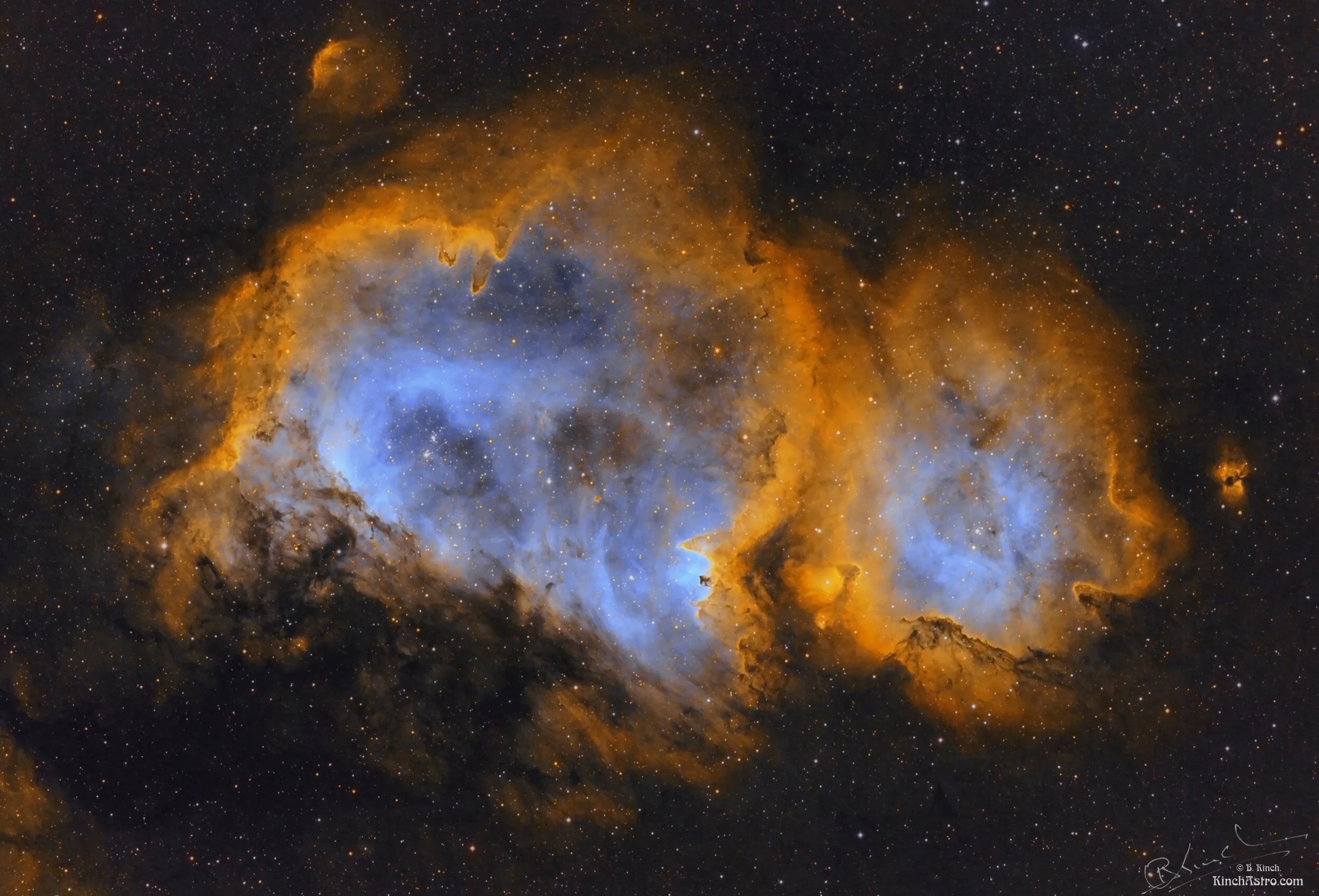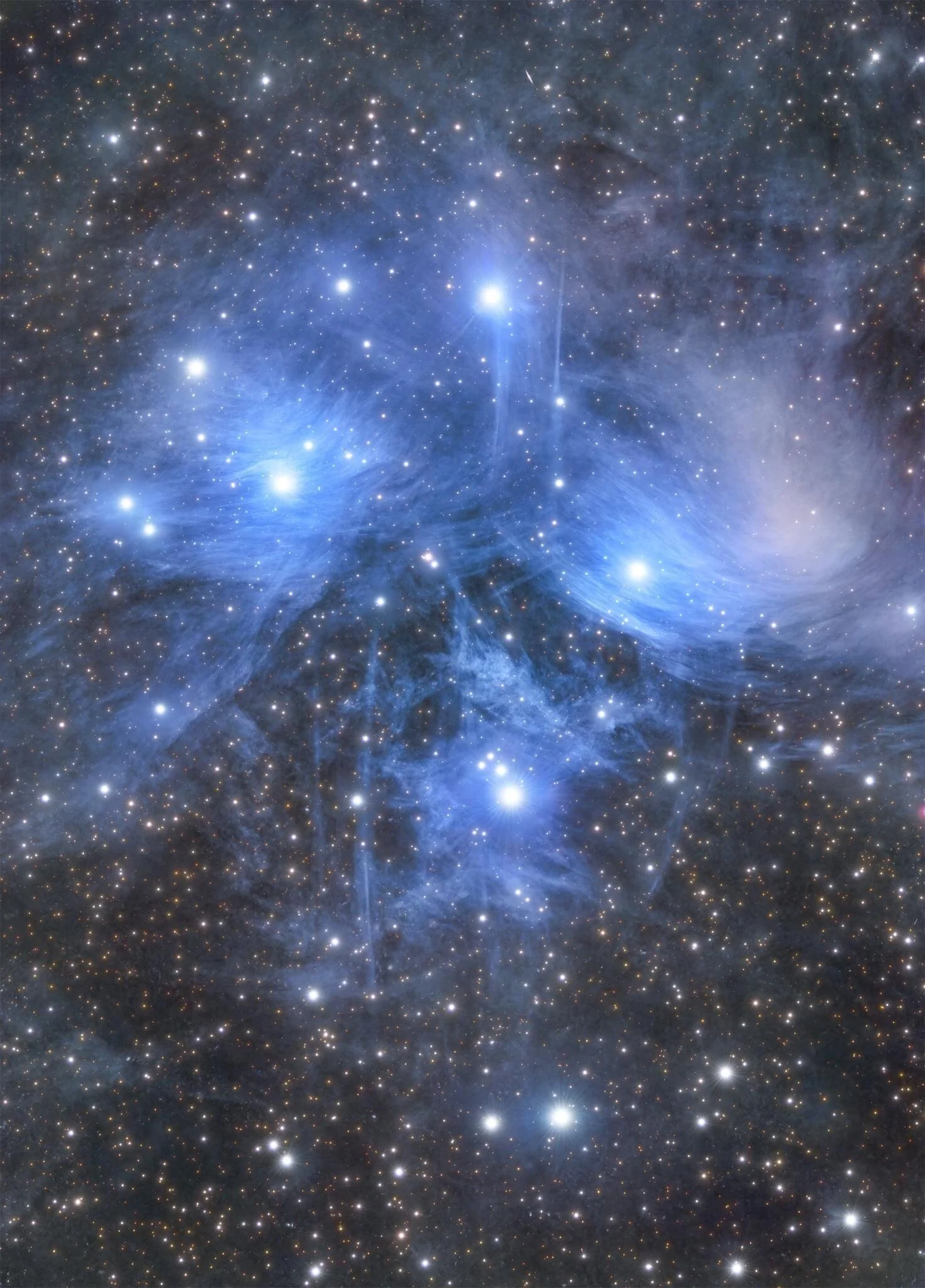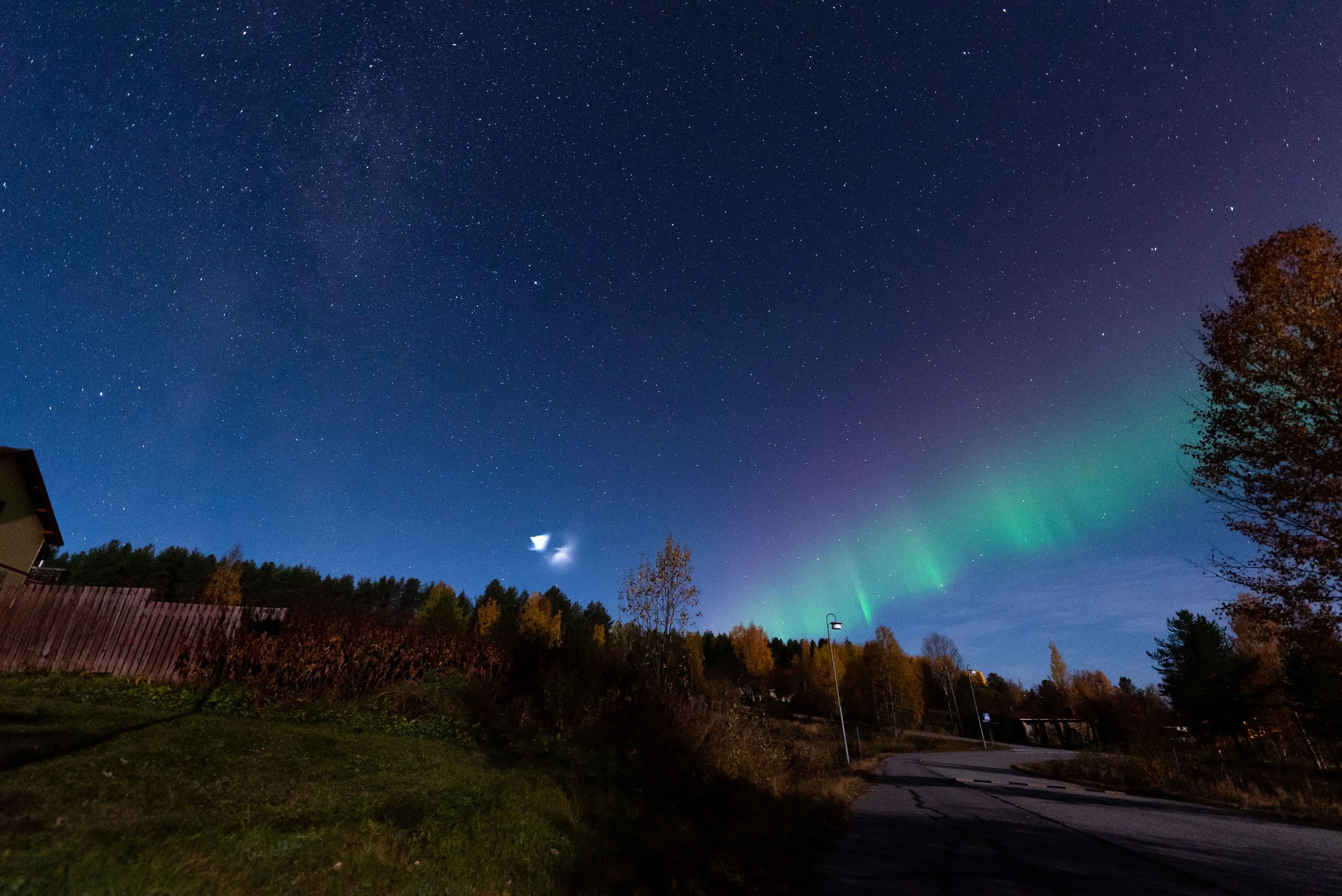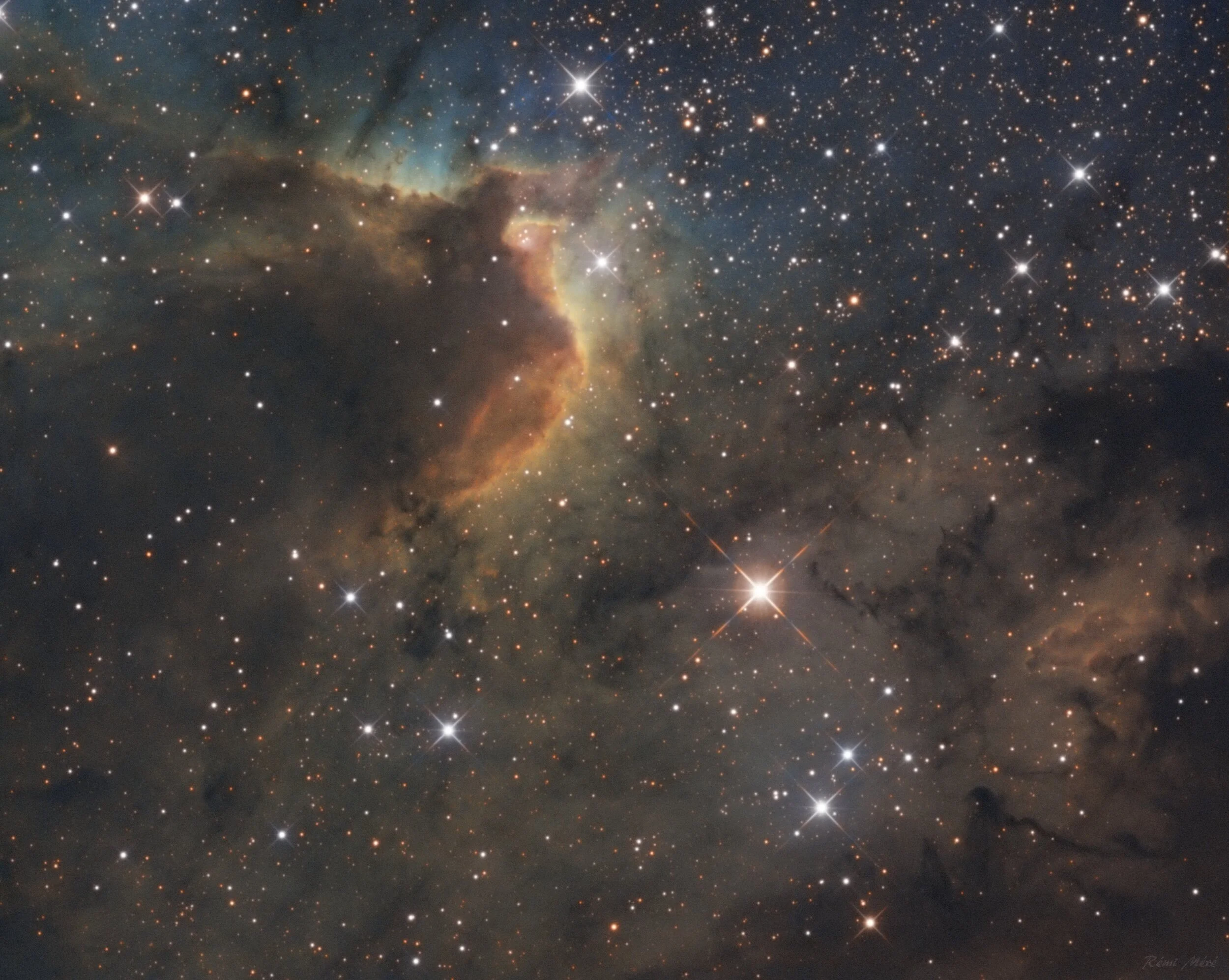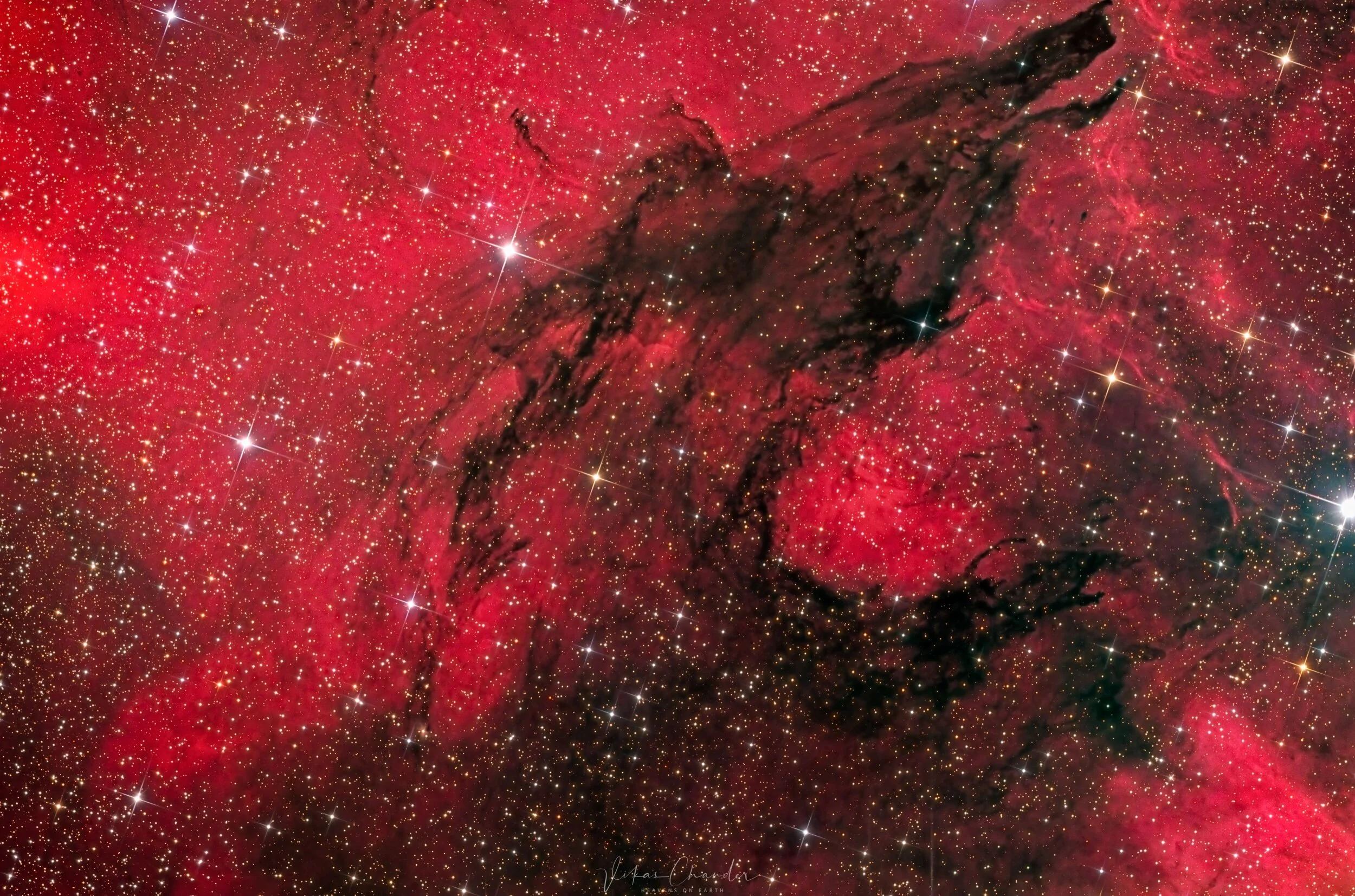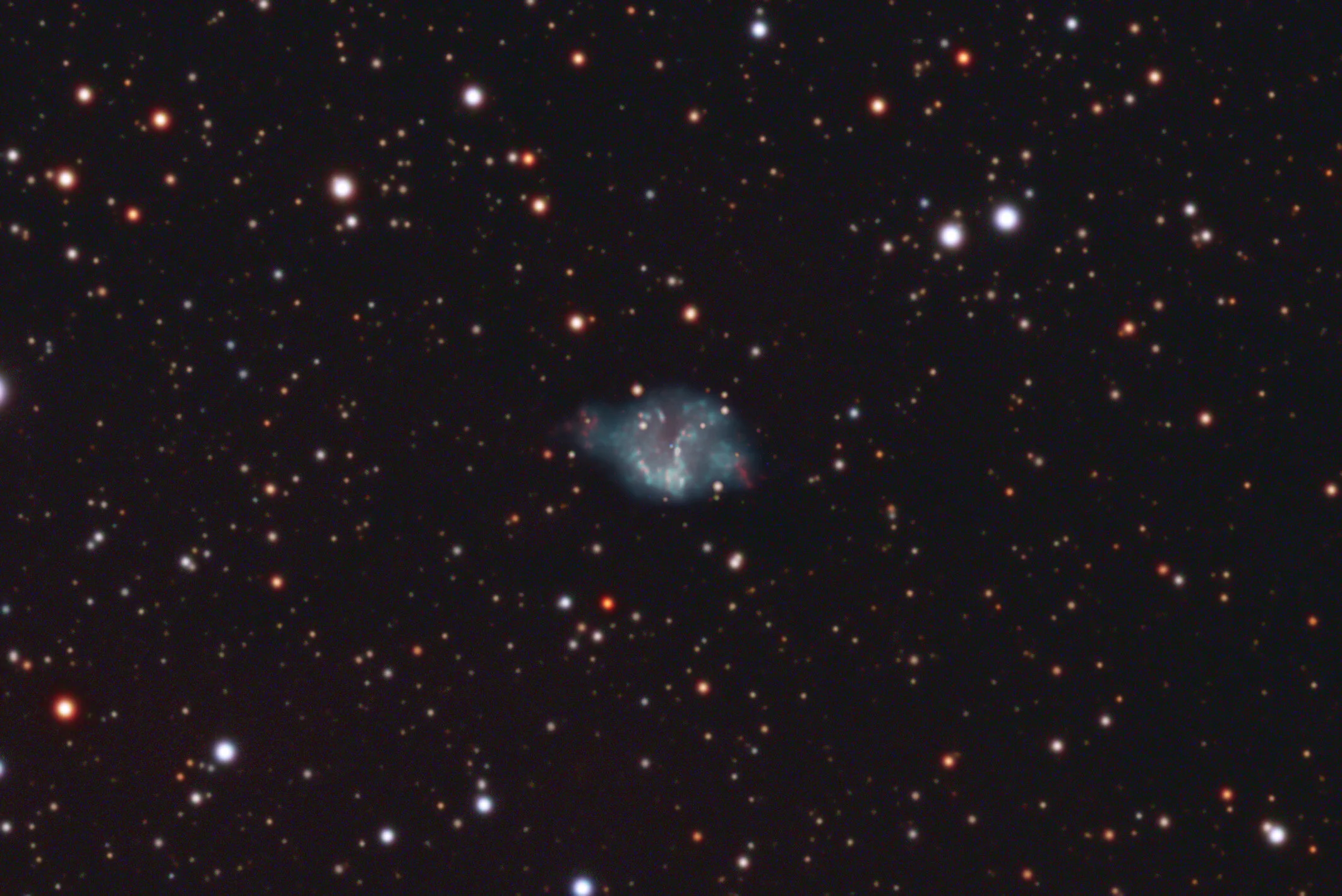
AAPOD2 Image Archives
Dark Salamander
Image Description and Details : ASI 2600c + Sharpstar 94mm APO. About 5.5 hours total.
Copyright: Dave Dev
fornax dwarf galaxy
This is the Fornax Dwarf Galaxy from an advanced request I did at telescope.live. I had to split it over 2 different nights to get it all due to issues with acquisition and while I didn't get all the luminance I intended it still turned out decent to me.
This is 3x 600s L, 5x 600s, R, 5x 600s, B, and 5x 600s G taken with an FLI PL16083 through Astrodon LRGB filters and an ASA 500N f/3.6.
Copyright: Scotty Bishop
Soul Nebula
This complex is the eastern neighbor of IC1805 (Heart Nebula) and the two are often mentioned together as the "Heart and Soul". Located about 6,000 light-years from Earth, the Heart and Soul nebulae form a vast star-forming complex that makes up part of the Perseus spiral arm of our Milky Way galaxy. The Soul nebula is also known as the Embryo nebula, IC 1848 or W5.The Perseus arm lies further from the centre of the Milky Way than the arm that contains our sun. The Heart and Soul nebulae stretch out nearly 580 light-years across; the diameter of the Milky Way, is roughly 100,000 light-years across.Imaging telescope: Takahashi FSQ130EDImaging cameras: FLI ML16200Mounts: Takahashi EM 400 Temma 2MGuiding cameras: QHY CCD QHY 5 IIFocal Extender / Reducer: Tak QE 0.73x Software: PHD 2, Astro Pixel Processer, PixInsight , Sequence Generator Pro SGPFilters: Astrodon Ha + Astrodon OIII + Astrodon SIIAccessories: ATIK EFW3Original Resolution: 3500 x 2500 Dates: Sep 15 - Oct 5, 2021Frames:Astrodon Ha: 42 x 600"Astrodon OIII: 42 x 600"Astrodon SII: 42 x 600"Integration: 21 Hours.Center (RA, Dec): (43.568, 60.344)Center (RA, hms): 02h 54m 16.291sCenter (Dec, dms): +60° 20' 38.560"Size: 2.52 x 1.8 degRadius: 1.551 degPixel scale: 2.6 arcsec/pixelOrientation: Up is 180 degrees E of N
Copyright: Brendan Kinch
m45
M45 - Pleiades: The Seven Sisters Star Cluster.
…lies about 444 light years away toward the constellation of the Bull (Taurus). A common legend with a modern twist is that one of the brighter stars faded since the cluster was named, leaving only six of the sister stars visible to the unaided eye. The actual number of Pleiades stars visible, however, may be more or less than seven, depending on the darkness of the surrounding sky and the clarity of the observer's eyesight.
Tech card:
Imaging telescope: Explore Scientific 127mm ED TRIPLET APO.
Imaging camera: ZWO ASI294MM-Pro.
Mount: iOptron CEM60.
Guiding camera: ZWO ASI290MM mini.
Focal reducer: Explore Scientific 0.7 Reducer/Flattener.
Accessory: ZWO OAG · ZWO EAF Electronic Auto Focuser · ZWO ASIAIR Pro · ZWO 8x 1.25" Filter Wheel (EFW).
Frames: Astrodon Gen 2 LRGB E Series: 80x120" (2h 40' ) (gain: 120.00) -20C bin 1x1.
Integration: 2h 40'
Darks: 50.
Flats: 30.
Flat darks: 30.
Avg. Moon age: 3.55 days.
Avg. Moon phase: 13.62%
Bortle Dark-Sky Scale: 4.00.
RA center: 03h46m41s.
DEC center: +24°09′32″
Pixel scale: 0.706 arcsec/pixel.
Orientation: 91.368 degrees.
Field radius: 0.943 degrees.
Re-process of my data of Feb. 15, 2021.
Imaging location: Abu Dhabi desert, UAE.
Copyright:Wissam Ayoub
NGC7822
NGC7822, Sh2-171. This is an object that I have been wanting to re capture for several years now. My first complete image with the new William Optics FLT91.Technical cardImaging telescopes or lenses: William Optics FLT91mmImaging cameras: ZWO ASI 294 MM Pro Cooled Mounts: iOptron CEM120Guiding telescopes or lenses: William Optics Guidestar 61mmGuiding cameras: ZWO ASI 120mm mini Focal reducers: William Optics 0.8 reducer/flattnerSoftware: SharpCap Sharcap 3.2.60 · Stark Labs PHD2 · QHYCCD Pole master · Pleaides Astrophoto PixInsight · N.I.N.A.Filters: Astronomik 6nm Ha · Astronomik 6nm OIII · Astronomik 6nm SIIAccessory: AstroZap Dew Heater Straps · Pegasus Astro Ultimate Powerbox V.2 · Moonlite focuser 2.5 inch Focuser with high resolution stepper motor Dates: September 26-28 2021Frames:Astronomik 6nm Ha: 131x180" (gain: 120.00) bin 1x1Astronomik 6nm OIII: 90x180" (gain: 120.00) bin 1x1Astronomik 6nm SII: 103x180" (gain: 120.00) bin 1x1Integration: 16.2 hoursDarks: ~50Flats: ~50Flat darks: ~50Locations: Remote site: Fredonia, Al., Lanett, Alabama, United States
Copyright: Altum spatium Astrophotography
Rocket launch, auroras & milky way
Image Description and Details : A rocket launch was visible in Finland on night 27-28-9-2021 and I saw the first time it appeared on the sky from a sky camera. Then I suspected it could be visible again in about 90 minutes. I waited for it and was rewarded with a photo I am very satisfied with.
Copyright: Dennis Lehtonen
Sh2-155
Image Description and Details :
Baader B 1.25" filtre bleu: 25x300" (2h 5') -10C bin 1x1
Baader G 1.25" filtre vert: 25x300" (2h 5') bin 1x1
Baader Ha 7nm: 93x300" (7h 45') -10C bin 1x1
Baader R 1.25" filtre rouge: 25x300" (2h 5') bin 1x1
Badder OIII 8.5NM: 90x300" (7h 30') -10C bin 1x1
Badder SII 8nm: 127x300" (10h 35') -10C bin 1x1
Intégration: 32h 5'
Copyright: Rémi Méré
SL17 Wolf Nebula
Image Description and Details : There are few objects of particular note in Lupus, the Wolf constellation, but one of them is this very opaque dark nebula, which lies in the foreground and blocks out the light from thousands of stars beyond. This nebula belongs to the group of 42 dark dust clouds of high visual opacity which are referred to by the initials "SL" in some atlases.
Telescope : Planewave CDK 17 F6.8
Camera : SBIG STXL 11002
Mount: Software Bisque Paramount ME
Pixel scale : 0.63 arcsec/pixel
FOV : 42 x 29 arcmins
Filters :HaLRGB
Integration: 14h30m
Ha 10x30m
L 12x15m R 9x15m G 8x15m B 9x15m
RA center: 16h 03m 29s
DEC center: -42°01′51″
Copyright: Vikas Chander
PM1-333
Image Description and Details : PM1-333 is a small (70 arc seconds) planetary nebula in the constellation Cepheus. It was discovered by Andrea Preite-Martinez in 1988. I believe this to be the deepest, and highest resolution colour image of this target. The tiny blue progenitor star can just be made out dead centre of the image.
It lies within IC1396 where it appears as a small dot at the bottom left hand corner in J-P Metsavainio's excellent image https://1.bp.blogspot.com/-JEMi-QvpB0Q/XicHMRDQXbI/AAAAAAAARug/ECBNZGRTptwRSAOExQSKmmvCIZWz6niCACLcBGAsYHQ/s1600/IC1396Det.jpg
Image captured on my remote dual rig at Fregenal de la Sierra in Spain between 20-30 September 2021.
Scopes: APM TMB LZOS 152 Refractors
Cameras: QSI6120wsg8
Mount: 10Micron GM2000 HPS
A total of 54 hours image capture (HaOIIILRGB)
Copyright: Peter Goodhew
Cederblad 111
Image Description:
This is an image of Cederblad 111. It is a nebula complex about 500 light years away in the constellation Chamaeleon. Cederblad 111 refers to the blue reflection nebula near the center left of the image. You can also see the reddish nebula GN 11.07.3 at about the ten o'clock position relative to the blue reflection nebula. If you zoom in really close, you can just make out the Herbig-Haro objects: HH 49 and HH 50 at about the five o'clock position relative to the blue reflection nebula. The entire Chamaeleon I cloud covers an area of 5 square degrees and, at this distance, is one of the closest regions of star formation to the Earth.
Copyright: Bernard Miller

